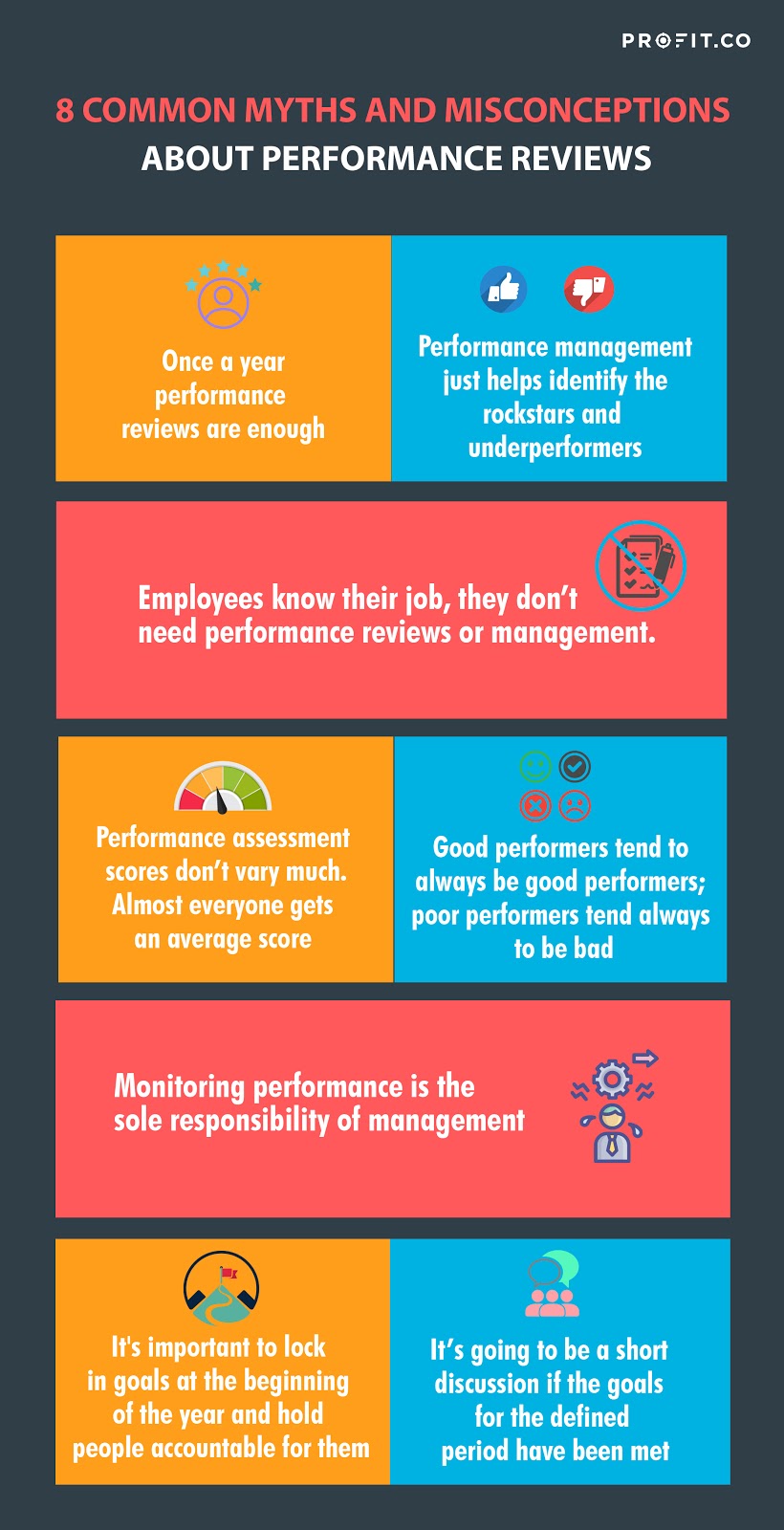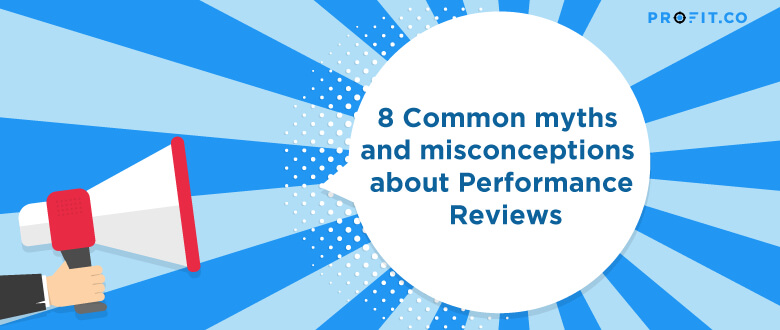The performance appraisal process is an integral part of every organization. Performance reviews are designed to increase the productivity of a company’s employees through an engaged, constructive conversation.
There is something that is much more scarce, something rarer than ability. It is the ability to recognise ability.
Performance management can be a complex topic, and it’s subject to many quirks and idiosyncrasies. And so, common myths about performance management still prevail, that might pose an obstacle for organizations from reaping its benefits. Let’s take a look at some of the myths associated with performance reviews:
Myth #1: Once a year performance reviews are enough
Conducting a once-a-year performance review is not enough. This can do more harm than good, as you run the risk of having inaccurate assessments. The less the frequency of a performance review process, the more inaccurate the assessments.
Additionally, annual reviews don’t give the organization an opportunity to course-correct and improve throughout the year if something goes awry during the course of the year – the employee could be over- performing in his/her current role, but then slowly losing motivation and seeking greener pastures elsewhere. There might be individuals who need training to achieve their goals. Ignoring these factors can be an impediment to the organization’s growth.
Infrequent review process can lead to recency bias– the way a person performed on their most recent project can influence the review process. It could go either way, and either way, it doesn’t do the organization or the employee any good in the long run, as assessing someone on the one recent project is not a good indicator of their ability.
The more feedback an employee receives, the more likely they are to feel that their efforts are being recognized.

Myth #2: Performance management just helps identify the rockstars and underperformers
There’s more to a performance review than just identifying the top performers and the underperformers. This is a process where the organization can let its employees know that they are invested in their career and the role they play in the company’s growth.
Employees who feel listened to and feel that the organization is taking a genuine interest in their career, stay loyal to the organization over the long term, perform better and don’t seek out employment somewhere else. A well structured performance review process helps employees get closer to their goals and also reduces attrition.
Myth #3: Employees know their job, they don’t need performance reviews or management.
No matter how well a certain employee is performing, it is always important for the organization to keep track of their performance. When the employee knows that their performance will be reviewed periodically, it increases the quality of their work and they put in more effort to meet the organization’s goals.
Myth #4: Performance assessment scores don’t vary much. Almost everyone gets an average score
This is not true. Performance appraisal scores vary across individuals. Rating employees and seeing the distribution of performance can be a highly beneficial part of performance reviews. While comparing employees can have its drawbacks, there certainly is no guarantee that assessment scores will be the same across a company or even a department or team.
Myth #5: Good performers tend to always be good performers; poor performers tend always to be bad
There is no guarantee that individuals who are good performers one year would be good performers the following year as well. The same goes for poor performers.
The workforce today is constantly being met with innovations that require them to upskill and learn new things. So what works today may not work tomorrow. Therefore, there is no way to tell how a good or bad performer will perform the following year.
Organizations can use tracking platforms that help measure growth and development. When an employee’s learning is aligned with the organization’s goals, it’s a win-win situation for all.
Myth #6: Monitoring performance is the sole responsibility of management
Gone are the days when an individual would stick with the same job till they retire. They now have a better understanding of their career goals, progress, skill sets, and ability. And so, they take the responsibility of steering themselves in the right direction.
However, often people can’t see themselves objectively. That’s where a manager steps in. Managers help by providing direction and guidance throughout the year. To make the review process even more effective, and unbiased, organizations are doing away with traditional performance management systems, and following systems that take into account all perspectives: not just from managers, but the employees themselves, customers, co-workers and partners.
Myth #7: It’s important to lock in goals at the beginning of the year and hold people accountable for them
When organizations followed the traditional performance management system, goals were identified at the beginning of the year and reviewed at the end of the year.
Routines are wonderful, but the real world hardly functions the way we want it to. To be able to adapt is part of the modern performance management process. A lot can change during the course of the year, markets can change, new competitors can emerge, priorities can shift – given all these changes that can happen, adaptability is important. With new developments come new priorities and projects and therefore new goals.
Performance management system in the present day and age must have the flexibility to adapt along with the changing world. This, however, does not mean that an organization must come up with new goals every month. Instead it must identify overarching strategic priorities that stay constant while supporting goals adjust and circumstances change. These strategic priorities act as a guiding star for employees to follow as they adapt their individual priorities to fit the larger goal of the organization.
Myth #8: It’s going to be a short discussion if the goals for the defined period have been met
Performance reviews tend to be centered around the past a lot — how the performance was the past year, what went well, what didn’t go well. And if an employee has met their goals for the defined period, they might think it’s going to be a short conversion.
But meeting goals and objectives for a certain period is just a small part of a much bigger picture. There’s much more to a performance review than achievements. The possibilities that lie ahead for the employees are more important than the past. A performance review is the perfect platform to hold more meaningful and deeper conversations about topics such as future expectations, growth potentials, positive and constructive feedback, and avenues of strength and growth and development plans.
In Conclusion
These myths are the result of outdated management thinking. An effective performance management system can help dispel these myths so that organizations who invest time and money in developing performance management systems can garner quality data. This can help them make better decisions, bring about positive changes, innovate, and improve performance that would benefit the individual, team and organization as a whole.

